Tagged: social media
How to Create Buyer Personas That Work for Your Business
- by Alyson Shane
Let me tell you a dirty secret: I hated building buyer personas when I was taking my business courses in university. I thought they were useless, frivolous, and something that marketing agencies could charge exorbitant fees to their customers to develop.
Then, as it so often happens in the world of Being an Adult, I started running my own business and learned that I was totally wrong.
In fact, understanding and developing buyer personas was, in fact an integral part of understanding a businesses' target audience, and how best to communicate with them.
As I so often say when it comes to advice I dole out on this blog: do as I say, not as I've done. Learn from my mistakes; understand what a buyer persona is and how it benefits your business, and use it to the best of your abilities.
Not sure what a buyer persona is, or how it can help your business? No worries, I've got you covered:

What are buyer personas & what do they do?
At it's core, a buyer persona is essentially a portrait of your ideal customer.
In terms of content marketing strategy, having a comprehensive buyer persona helps businesses (or people like me!) deliver content which is timely, informative, and that your audience actually want to see and consume.
Different people respond differently to various kinda of images, messaging, and communication, and it's important to take these perspectives into consideration while figuring out how to best serve your customers.
For example, a 20-year-old Snapchat user who is starting university and has very little disposable income will have respond to different messages, and will have different motivations, goals, and purchasing power than a 45-year-old father of two who is a CEO at his company and has lots of disposable income. Now, your business may not be trying to appeal to both of these extremes, but what this is meant to illustrate is that you need to know who your ideal buyers are, why they should care about your business, and (more importantly) how your product or service can appeal to them or make their lives easier.
How can you build buyer personas that really work?
The key to building effective buyer personas is that you have to make a bunch of them. This may feel like tedious work (my university-era self would agree) but creating a few personas can help you develop well-rounded ideas about the kinds of people you want to communicate with, and who you think are the ones who would be interested in buying what you have to offer.
You don't have to get super specific, but identifying the following areas are generally pretty useful:
Basic info
- Name. This isn't technically necessary, but I like naming my buyer personas. I find it helps with keeping track of who they are, and makes them feel a bit more "real".
- Job title. Are they CEOs? Mid-level management? Students working at Starbucks? Like I said earlier, where they are in their professional life will influence their purchasing power.
- Details about their job title or role. These flesh out their day-to-day motivations at work and help inform what they may be looking for professionally.
General demographics
- Age. Different generations and age brackets have different motivations and priorities, and it's important to identify what they are in order to figure out what they want.
- Gender. Are you marketing your products to men, women, both, or otherwise?
- Location. Where your ideal customers are can make a huge difference on how you craft your message to them.
- Salary. Lots of people are afraid to talk about money and finances, but let's be honest: how much your buyers have to spend influences whether or not they have monty to buy your products or services.
- Education. People's level of education shapes a variety of areas such as their level of employment, salary, interests, and much more.
- Family. Are they single? Married? Do they have 2.5 kids? Are they close with their extended family? Their ties to their families and those obligations will influence their purchasing power.
Values & objections
- Values. What are the things that your buyers believe to be important or valuable? Eg: buying local; investing in secondhand or slow fashion; or driving an expensive BMW.
- Objections. What are some objections that could come up during the sales process? Eg: your product is too expensive; too niche; too complicated for a layman to see any value, etc.
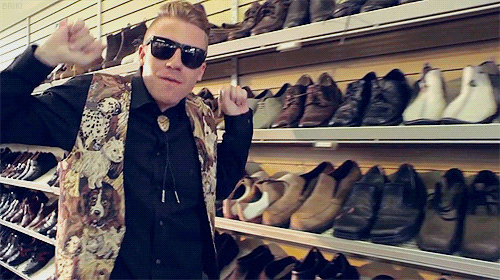
(do your buyers shop like Kanye or like Macklemore?)
Extras
This area can change a bit depending on what your business sells, but generally some other areas which can help build an accurate buyer profile are:
- Computer literacy. Do your buyers go mining for Bitcoins, or do they struggle to find the Any Key?
- News sources. Your customers' values will likely be different depending on whether they get their news from Fox News or Al-Jazeera.
- Hobbies. How your customers spend their free time can help you understand more about their motivations and values.
- Interviews and real-life examples. If you already have an existing customer base, take a look at your reviews and customer service experiences. How do people talk to your team, or speak about your business?
Sussing this information out
Figuring out all this information by yourself may seem like an impossible task, but it isn't! There are actually a variety of ways that you can find the information you need to build a series of effective buyer personas, which are:
- Asking your team and colleagues. As I said earlier, if your business is already customer-facing you can speak to team members who interact with your customers to build complete profiles.
- Check your website stats. This should be obvious, but if not some things to look for are: keywords people used to find your website, where your visitors came from, and the actions they took while they were on your page. If your website doesn't have Google Analytics installed, back the hell up and install it before coming back to this article. Your analytics tool is one of the best tools at your disposal for understanding customer behaviour.
- Use social media. Look for services or products similar to your own and spend some time analyzing the discussions happening on Facebook, Twitter, LinkedIn, and on blogs. People are more likely to share negative experiences than positive ones online, which can provide you with important insight into the areas where your buyers feel your industry could be doing better.
Why does this process matter?
This may seem like a lot of work (and trust me, it is!) but taking the time to investigate and research your potential customers and to create well-rounded buyer personas can go a long way towards helping you understand your businesses' strengths and weaknesses. Spending time on this process helps your business provide a better experience for your customers.
Still want a little more help creating an effective buyer persona? Check out these free buyer persona templates from HubSpot. They're what I use day-to-day, and I'm sure you'll find them to be invaluable, as well!
How do you create buyer personas for your business? Do you have anything to add to what I've outlined in this post? Tweet at me or tell me in the comments!
How to Get Your Start as a Digital Marketer
- by Alyson Shane
A few weeks ago, while travelling around Central America, I received a comment on my Instagram which I wanted to take the chance to respond to here on the blog. Here's the question:
How did you get started doing social media marketing? I am interested in this but have no current knowledge of marketing.
-Brittany T.
Instagram isn't the best way to answer a questions like this in an in-depth way and I've been chomping at the bit to get home and write a longer, more detailed response because I wish someone had told me all of this stuff back when I was trying to figure out what I want to do.
Not only because it's great to hear what other people did to get to where they are in life, but also because being a digital marketer isn't really something that anyone worth their salt can just start doing successfully. That's because there's a lot of ongoing effort that goes into crafting a personal brand that people (freelance clients or future employers) will feel comfortable handing their social profiles over to.
So without further ado, here we go:

Build your personal brand
Your "personal brand" is exactly what it sounds like: it's the image of yourself that you project out into the world through your words, your actions, and your behaviour.
What's beautiful about the internet is that you can craft your personal brand to reflect whatever parts of yourself you'd like to accentuate.
This takes time. People aren't going to start recognizing your name overnight, and
The more time you spend working on and crafting your personal brand, the stronger your image will be and the sooner opportunities will start coming your way based on people's perceptions of you. Your audience will see you as a sincere, intelligent person and will be breaking down the door to work with you. I wrote more about personal branding here.
Build a badass website
I've said this before, but your website should be the centre of everything you do online; all of your social media feeds should attempt to drive traffic back to your website, and it should clearly and succinctly explain to people who you are, what you do, and what you're about.
Make your website as easy to navigate as possible. Try to aim for a slick, clean layout without a lot of clutter, and try to use bright, eye-catching photos. Personally I prefer websites with a white background and dark font, because it's easier to read and looks cleaner, but do what works for you.
Start blogging
I've been blogging since 2003, and the latest iteration of my blog (what you're reading right now) has been active since 2009. In that time I've transitioned from being a "lifestyle blogger" to someone who, largely, writes about their profession, but what matters is that I've been publishing content online for a long time.
Regardless of the topic, maintaining a blog for an extended period of time looks great professionally. Here's why:
- It's the best way for you to showcase who you really are in more than 140 characters.
- It shows that you can commit to an ongoing project (blogging).
- It demonstrates your writing skills.
Blogging has helped me establish myself as someone who understands their industry, is a strong writer, and has allowed me to expand my audience. My blog has allowed me to speak at MBlog, get published in the Winnipeg Free Press, and even to get featured on ShawTV as one of Winnipeg's Hottest Bloggers. When I was applying for jobs all of my employers checked out my blog, and it's the first place most of my clients find me nowadays.
But... what if you hate writing?
I get asked this question a lot, and to be honest I never really know how to respond to it. In my view, people who are interested in social media enough that they want to do it professionally should have a deep interest in how we communicate online and how we use persuasive language (aka rhetoric).
Because let's be serious: someone in my position spends most of their days writing in one form or another. Maybe it's website copy, maybe it's scheduling tweets, maybe it's writing a blog post or a newsletter, but either way all day every day, we're hustlin' writing.
If you don't like writing and understanding the nitty-gritty of how we communicate with each other... maybe this isn't the profession for you.
Having a social media presence
I can't stress this one enough.
If you are genuinely serious about pursuing a career as a social media manager or digital marketer, you need to jump into social media feet-first and do your best to maintain an active presence on platforms which will help you get a bit more well-known. I prefer Twitter for this purpose, personally, but if you don't have at least a Facebook profile, Twitter presence, and Instagram account, it's unlikely that prospective clients will take you seriously.
This is because how well you manage your own accounts gives people an insight into the kind of person that you are (are you nice online, for example), demonstrates that you know your way around at least a few of the major communication platforms, and shoes that you're relevant because you update them all regularly.
Oh, right: update them all regularly. This is key. Nobody is going to take someone who sells their services managing and understanding social media platforms seriously if their last tweet was from 2014.
Not just that, but social media is the easiest way to share that blog content that we talked about earlier. Cross-promoting yourself across a variety of social networks is one of the easiest ways to get noticed by a potential employer or client.
Show up to local Meetups
This expands a bit on the earlier point about building your personal brand: while connecting online is great, it's important to turn those digital connections into real, face-to-face ones, and the easiest way to do that is to show up to things.
If you're in Winnipeg, there are plenty of opportunities to connect and get known. Some of them are:
- Winnipeg Social Media & Technology Group
- BANG! Business and Networking Group
- I Love Marketing Winnipeg
- Secret Handshake (I'm usually at this one - say hi to me if you see me there!)
Not in Winnipeg? Check out Meetup.com for local social media-related gatherings near you!
Let your passions drive you
I believe that being passionate about what you do is the single most important asset in this equation.
While I make my living as a digital marketer, I actually identify as a writer. That's it. I love to write, and am obsessed by rhetoric (aka persuasive language) and the ever-evolving nature of social media, so applying what I love to do (writing) to something that interests me (communication/social media) just made sense.
If you aren't passionate about what you do, then you won't take the time to explore it and understand it, and part of being an effective digital marketer is keeping up with the ever-changing trends in your industry. Not just that, but if the idea of developing marketing plans for Instagram, or spending your days monitoring @ mentions on Twitter doesn't make your heart go pitter-pat, then you may want to rethink your career choice.
A lot of this comes down to perspective, too: like I said, I identify as a writer above all else, and managing social media profiles, developing copy for marketing strategies, and keeping up-to-date on how to effectively communicate on each platform (to hashtag, or not to hashtag? That is the question!) is just another way to sharpen my writer's chops.
So, figure out what you love the most about social media and make that your focus.
Hopefully that helps, Brittany! Good luck to you on your career journey!
Do you have any questions for me about being a business owner, digital marketing, social media, or anything I mentioned in this post? Ask me in the comments or drop me a line - I'm always happy to hear from you!
How to Build a Killer Digital Marketing Strategy
- by Alyson Shane
We live in tumultuous digital times, my friends. New social networks seem to be appearing every day, and if you're trying to promote your business online, it's easy to feel like there are too many options to choose from.
Most clients I talk to when we first meet have an ad-hoc strategy when it comes to promoting themselves online; they know of a few social networks and have accounts set up, but in many cases their messaging is muddled, unclear, and in many instances they are trying to reach an audience who simply aren't there.
That's why developing a digital marketing strategy is so important. Having a strategy which has taken into consideration both your brand's needs and those of your audience and customers can make or break your marketing efforts, so today let's go over some steps to build a badass digital marketing strategy to help you stand out online:
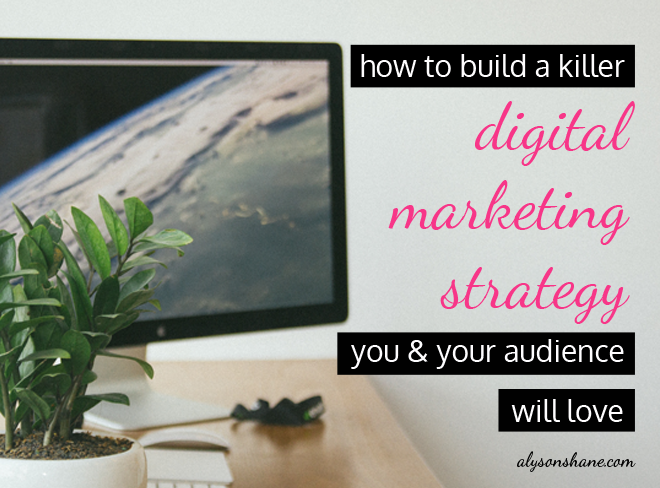
Determine your goals
The first thing I ask a prospective client is: what do you want your digital marketing strategy to accomplish? Many people have never thought about this before, and if you haven't until just now, that's okay! But now is the time to start thinking about what all the time and effort is going to do for you.
When I was in university, I took a few business courses where I learned about two crucial acronyms for planning that I still use every day: SWOT and SMART.
SWOT stands for Strengths, Weaknesses, Opportunities, and Threats, and is helpful when planning a project or new business venture so you can assess (you guessed it) your strengths and shortcomings before moving forward.
SMART stands for Specific, Measurable, Attainable, Realistic, and Timely. When planning out your goals for your digital marketing strategy, make sure that they all meet this set of criteria. What do you want to accomplish and how will you measure it? What are realistic and attainable goals to aim for?
Understanding your SWOT and SMART goals will help direct your time and energy, so you don't waste time floundering around, trying this or that, instead of having a focused and easy-to-understand set of goals.
Ask "Why me?"
What I mean by this is: ask yourself why your business exists.
What does your organization (or your small business) do that makes you worth working with? Are you a Twitter whiz? Do you write fantastic, eye-catching copy? Are your presentation and PowerPoint (or Keynote) skills second-to-none? How do your skills and your personality set your business apart from your competition?
This may take some digging and soul-searching, and that's okay! Many of us (myself included) have had to take a hard, critical look at our business and suss out what makes us unique, and how we can convey that to our audience and potential customers.
Tell your story
Crafting a narrative about your brand is one of the most important things you can do online. Your story -what makes you unique, different, and perfectly posed to solve your customer's problems - is what sets you apart from your competition.
Humans are natural storytellers, and people will be attracted to and remember a brand whose story made them feel something. Positive feelings also lead to feelings of trust, comfort, and help shape your brand's identity not just as a company, but as somewhere where real, dedicated people work and put their energy into.
(Want more info on brand storytelling? Check out my post Marketing Your Brand Through Storytelling)
Build your buyer personas
A buyer persona is exactly what it sounds like: a fake profile of the kinds of people you want to attract and engage with online.
A complete persona should have details about the person's background (I like to name my buyers, too), what they do for a living, what their values and beliefs are, what they like and don't like, and what motivates their decision-making process.
Developing buyer personas is one of the most important steps you can take as part of your digital marketing strategy because it gives you a deeper insight into what your ideal customers are looking for online. This information will inform the kind of things you say, what you share, and the people you connect with online.
Identify where your audience will be
This is critical to implementing a successful digital strategy because if you don't take the time to figure out where your target audience is hanging out online, then you'll never be able to reach them and show them how awesome you are.
That's why doing a buyer persona is so important: it doesn't just inform what to say and how to say it, but also where you should be saying it for maximum impact. For example, if your target audience are Etsy obsessed DIYers who love Pinterest, spending all your time marketing on LinkedIn, which is a business networking site, isn't going to help you find your audience anytime soon.
Take time to think about where your ideal customers will be spending their time thinking about the things that interest them online, and how you can make yourself stand out so they notice you.
Track your success & pivot when necessary
Social networks change over time, so it's important to keep an eye on how successful your digital strategy is, and to fine-tune as you go along. Paying attention to the statistics of each social media account (and your website, if you're blogging, too) can go a long way towards informing what kind of content is resonating your audience, and which turned out to be rather lackluster.
What's wonderful about digital marketing is that unless you really screw up, your audience will usually forgive and forget about a post that didn't catch their eye, or a tweet that didn't go as viral as you hoped. This means you can experiment with different kinds of images, polls, contests, and more! Just track how successful each one was and try to duplicate the ones that did well.
Ask for help (if you need it)
Developing a robust digital strategy can be challenging and time-consuming, and even when brands and businesses have buyer personas they often can't (or don't want to) spend the time reaching out to them and connecting.
That's totally okay! You are not a machine designed for selling and promoting, and if you feel overwhelmed at the thought of having to run your business and develop and implement a digital marketing strategy, that's normal.
Many people choose to work with business consultants, who can help you determine the right direction for your company and develop a killer digital strategy to go along with it (I recommend Kyla Roma if you're in the market for someone; she's fabulous). There are also people like me who offer content management services to help keep you on track (shameless plug, haha).
There's no shame in asking for help, so if you're feeling baffled or overwhelmed make a point to reach out to someone and get the ball rolling on developing and implementing your shiny, new digital marketing strategy!
Do you have any questions about digital marketing? Do you want to know more about how to implement a killer online strategy? I'd love to know!
In My Community: Speaking to Red River College's Creative Communication Students
- by Alyson Shane
Earlier today I had the pleasure of speaking to students in their first year of the Red River College's Creative Communications program (aka #CreComm) about the state of social media, blogging, and the future of digital communication with my longtime internet pal Liz Hover.

(Really digging my Neil DeGrase Tyson hands in the bottom left, by the way)
This is actually my fifth year returning to speak to students in the program (my first time was in 2011 - how time flies!) and every year it gets better; not just because I get to see new faces and have brand new discussions, but because as my life has changed I've become better suited to be able to speak on these topics, going from a university student, to a university graduate, to being employed full-time and finally to running a business where I literally blog and do social media all day.
As usual, we didn't have enough time to cover everything that I wanted to speak about, so I wanted to cover a few topics that didn't really wrap up during my time with the students today.

Merging My Personal Brand & Business
I started off as a lifestyle blogger in 2003, back on LiveJournal, and spent a number of years blogging rather aimlessly and not with a lot of purpose. I blogged frequently, sure, but it was usually just about what I'd done on the weekend, or a video I liked, or whatever.
What I had at the time was a strong personal brand, but as I started to think more critically about my craft I wanted to write about my weekends less and less, and about social media, content marketing, and being a business owner more and more.
Blogging for my business gives my blog a sense of purpose, and has provided me with a theme to tie together a lot of topics and ideas which would have seemed weird to write about as a lifestyle blogger.
During our talk Liz turned to me and said "I like your blog now; you seem a lot more happy and positive" and that's because I am. My lifestyle blog chronicled a time in my life where I was largely unhappy and trying to figure myself out, and as I've grown, learned, and gained happiness and confidence as a result of running my business it's translated into what I write here on my blog.
It's totally okay (and normal, and expected) that your blog will change and grow as you do over time - that's okay! We're in a constant state of self-discovery, and our blogs and websites should be a reflection of that.
On Having Anxiety & Being Open About It
One of the things that we touched on in the class, and which several students asked me about afterward, was how I dealt with being an anxious person, and what led me to decide to share some of my personal struggles with my audience when some of them could be potential clients.
I first wrote publicly about my issues with anxiety for Bell Lets Talk Day in 2015. The post is called Living With the Mean Reds and it was one of the most popular posts I've ever written. Since then I've blogged about my progress, which apps I've used to help manage it, and even written about my falling-out with my family, and creating a family of choice to move forward in positive and constructive ways.
None of it is easy to write about, and one of my other family members cautioned me that writing about this side of my life may actually alienate potential employers or clients. My response to that is: if having anxiety or issues with my family stops someone from wanting to work with me, then we wouldn't have been a great fit anyway.
I'm going to do what I want and the kinds of people who respect and appreciate what I have to say will find me and want to work with me. It's worked out great so far.
Besides that, as our digital world becomes less and less private, the onus is on us as individuals to take the time to craft the narratives we want about ourselves online. Sure, you can't control what other people say (remember The Dirty? Omg) but going out of your way to craft your own narrative is an important part of creating your personal brand because even though we like to paint pretty pictures of ourselves online we all know deep down that there are hard times and dark days, and part of being an authentic and relatable human being is being honest with yourself and your audience about your struggles, even if that's challenging sometimes.
What If Blogging Isn't Your Thing?
Creative Communications students have to blog as part of their curriculum, and during our talk we touched on the fact that - let's face it - blogging may not be for everybody. Which I agree with; writing isn't easy for some people.
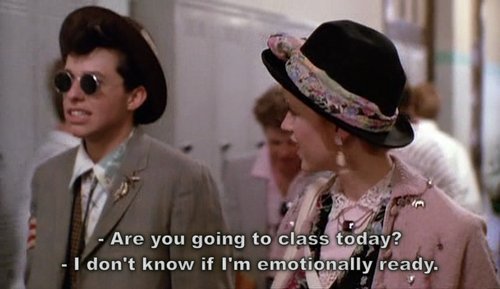
However, I do think that it's important that young people who are entering job markets which require them to be creative (eg: digital marketing, advertising, public relations, etc) should make a point to find a way to express themselves creatively online in a way that they can point to in an interview and say "this is mine."
Blogs also don't have to last forever. My good friend Luke is running year24.com a blog about (you guessed it) his 24th year. This project is on the easy side because he set the parameters himself, and there's a concrete start and end date. What matters is that he made a decision to do something creative and challenging, and was successful in doing so.
But maybe you really hate blogging for yourself, and the idea of holding a camera not attached to your iPhone scares the living daylights out of you. What can you do?
There are a variety of things: start a killer Instagram account about your pet like Liz did; reach out to publications online and start writing for them (one of the very first places I was published online was The Spill Magazine, for example); start interviewing local business owners that you admire and compile them on a website; create and grow a killer Pinterest community; you get the drift.
What matters is that you demonstrate that you're constantly learning, looking for new challenges and opportunities, and can present what you know in a fun and accessible way. The sky is really the limit!
Want More?
Do you have questions about blogging, social media, or how the heck I got to where I am?
Are you a teacher interested in having me visit your class to speak about blogging, social media and digital marketing to your students?
Drop me a line! I'm always happy to have a quick email exchange, a lunchtime chat, or even an after-hours pint at the Yellow Dog. Looking forward to hearing from you!
*As always, thanks to Kenton Larson at Red River College for having me!
Content Marketing vs Social Media
- by Alyson Shane
One of the things I find myself discussing again and again - with clients, friends, colleagues, and people who are genuinely confused about what I do, is the difference between "content marketing" and "social media."
Usually when I tell people I do content marketing and social media they respond with something like "oh, you just publish stuff on Twitter, right?" which is really only a small sliver of the equation.
While content marketing heavily involved social media, there's much more to creating content than just pushing it out across a variety of social channels. Even though there's a lot of overlap they are, in fact, two very distinct things, each with different goals, strategies, and processes.
So, once and for all, let's clear the air!

The Sun and the Solar System
Social media marketing is the focus of your marketing activity which is located on social networks.
When marketers share content on social networks like Facebook, Twitter and Pinterest, they're operating within the specific confines of those networks. Sure, they're sharing their own content in a lot of cases, but it's on someone else's network, and none of those networks connect to each other all that often (eg: you don't share Tweets on Facebook, and vice-versa.)
Conversely, the centre of every content marketing strategy is the organization's website.
A business' website is designed to be the central place for all of their branded content. Once the content has been published on the central website, it gets shared across the various social networks where the company has a presence. So, "social media" is the act of using specific social networks, and "content marketing" is creating content on your own website to be published and distributed.
The way that I like to describe this process is the "Sun and Solar System." In this example, your brand website is the 'Sun' - the focal point in all of your marketing efforts, and the brightest and most important star in the sky. The other social networks that you use to distribute the content are 'planets' which orbit around the central hub. Like planets in real-life, the 'planets' in this example operate independently of each other, all have unique features, and have one thing in common: they exist because of the 'Sun'.
Types of Content
Social media marketing is designed to fit within the confines of that social network. For example, a Tweet on Twitter needs to be 140 characters or less, Pinterest pins need to have eye-catching photos, etc.
Content marketing, on the other hand, can come in a variety of styles, flavours, and lengths because websites allow for much more creative and extended types of content. On a website brands can publish blog posts, videos, infographics, white papers and eBooks... the sky's the limit, really.
This flexibility in content means that brands can exercise a higher level of creativity in the content they create on their website, because they don't have to worry about falling within a 140 character limit.
Goals
While content marketing and social media marketing are used in tandem to reach specific goals, they actually are designed to achieve two different things:
Content marketing is focused completely on the 'Sun', which allows it to focus more on demand generation and content publishing than on getting the word out about it.
As a brand publishes content on their website, the 'Sun' in the middle of their solar system, they can use social media to direct traffic back to it, developing a relationship with their audience.
Social media is used to promote brand awareness. When a visitor lands on a brand's website, the brand has full control over what kind of experience that visitor is going to have, and they already have the advantage because the potential customer has already indicated interest by going there in the first place.
Because social networks can't be controlled by brands and businesses, the purpose of those networks then becomes to use them as a means to generate discussion and interact with their audience. Additionally, because social networks are mostly democratic (I say 'mostly' because of the recent introduction of YouTube Red) and all user account are created equally, social networks become a place for brands to have informal interactions with their audience.
Social networks also notify you when someone is talking about you, which makes tracking customer mentions, feedback, and criticism a lot easier to track than ever before.
Why Content Marketing?
Content marketing and social media go hand-in-hand, but many people I talk to focus only on the social media side of things because seeing a brand's presence across multiple social networks gives the impression that it's more important.
This is not true, and I'd actually argue that content marketing actually the more important of the two.
That's because in order for your social media feeds to have a way to genuinely connect with your audience, there has to be a central 'hub' (or Sun) at the centre of things to drive brand awareness and help craft a story. You can't tell your audience about who you are if you don't create the kind of content that helps them understand and care, and social networks just aren't as efficient at doing it because you have to play by the rules of each specific network.
This is why content marketing and social media marketing, though two different things with different purposes, are actually intricately linked.
Did this explanation make sense? What do you think about the difference between content marketing and social media? Tell me in the comments!
Before & After Blogging: A Handy Post Checklist
- by Alyson Shane
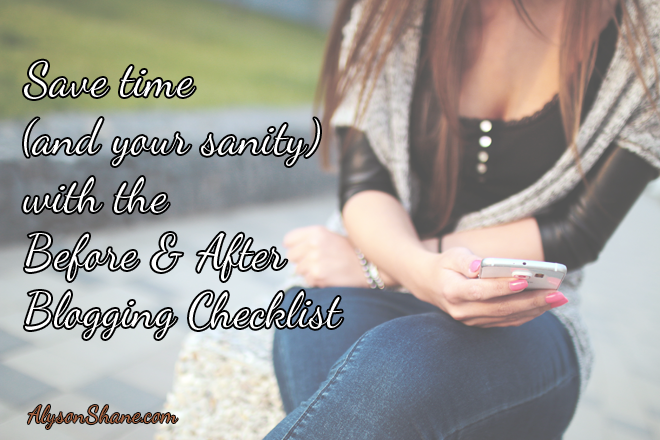
When I first started blogging (way back around 2003) things were easy. You wrote your post, hit 'publish' and other people's RSS feeds took care of the rest.
Nowadays things aren't so simple. Bloggers need to worry about things like search engine optimization, keyword inclusion, social media promotion, image design... the list goes on!
If you're new to blogging the amount of steps needed to make sure your post gets the attention that it deserves can seem really daunting, and even for a veteran blogger like me when things get crazy-busy it can be a challenge to make sure I'm taking all the necessary steps to promote my latest post.
With that in mind, I've put together a handy little resource for you (and me!) to use.
The Before & After Blogging Checklist is a simple little tool which helps keep track of the things to do before and after a post goes live. This helps me stay organized and on-track, and hopefully it will help you do the same!
You can view it here, or download it below for easy everyday use!
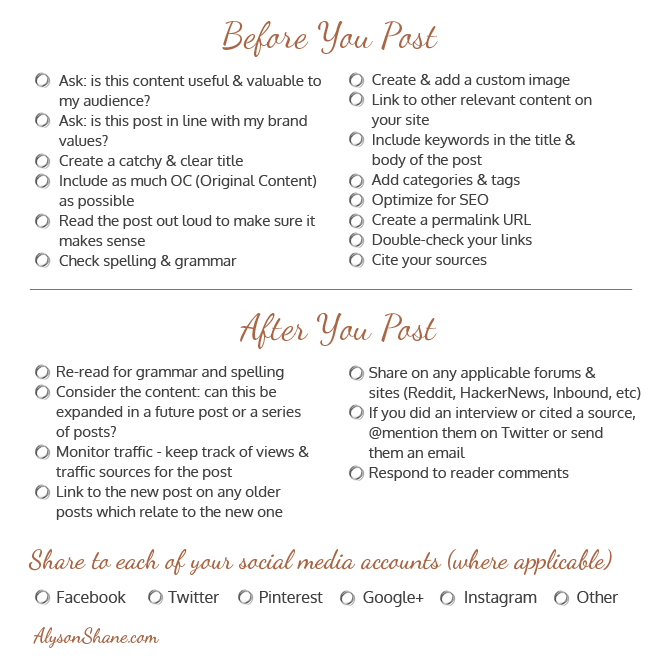
Want to keep a copy for yourself? Download it here:
Enjoy!
Twitter for Beginners Part 3: Finding Your Voice, Curating, Chatting & Analytics
- by Alyson Shane
Welcome back to the third installment of my Twitter for Beginners Series!
So far we've learned:- Some basic Twitter terminology
- How to set up your profile
- Finding and gaining followers
- Tweeting, replying and starting conversations
- What to do if someone is harassing you (muting & blocking)
- Making the most of Twitter's Tailored Trends feature
This final chapter will go more in-depth about how you can build your brand on Twitter, how to find and share great content, defining your tweeting 'style', and building a kickass network of people and brands that care about you.
So without further ado, let's get started!

Develop Your Voice
Whether you're tweeting from a business account or just trying to grow your own reputation online, what you say and how you say it will play a defining role in your success. Because social media can seem very simple to do, many people start blindly and try to develop their voice as they go.
While this is certainly okay, it's much more prudent (and time-saving) to sit down and ask yourself some basic questions about who you are, and how you can best convey that information online.
Some questions to ask are:
- Who are you?
- What are your goals?
- How do your Tweets support and further the above statements?
My answers would look like this:
- Alyson Shane, kickass content marketer & copywriter
- To grow my audience, work with great clients, and have a positive impact
- By sharing interesting content, engaging with my community and putting a heavy focus on local events and causes
If you're a small business owner yours might look like this:
- Babe McBaberson, DIY wizard and crocheter of charming baby clothes
- To drive traffic to my new website and generate sales
- By connecting with influencers, bloggers and other DIY-ers like myself to build a strong public profile
You get the point. The key to developing a strong voice online is to know who you are, what your goals are, and how your tweets help you further those goals. Your tweets and the content you share are a reflection of who you are, so always be mindful of what you say.
It's okay if you don't know this stuff right away. It might take a few days, weeks, or even months before you really have a solid idea of how your tweets can be the best that they can be, but the trick in the interim is to keep tweeting. Don't be paralyzed by indecision! When in doubt, be conversational, kind, polite, and share your work.
Curate Your Content (and Find Interesting Stuff)
Churning out interesting, funny, retweet-able content on a regular basis might seem like a breeze, but if you're just starting out it can seem like an insurmountable mountain of websites and jpegs.
Of course, sharing your own work and website content is important, but the trick is to pepper it in-between tweet replies, retweets, and sharing articles and images that help your followers get a sense of who you are. The aggregate of the content you tweet out is how people will start to develop an understanding of who you are, and that's what will make them care about you (and your product or business).
Here are some tips to get you started:
Maximize Lists:
Twitter has a great 'List' feature, which allows you to separate people that you follow into public or private lists that you can quickly scan for new content. The difference between a private and public list is, of course, than other people can see your public lists, but Twitter will also notify users when you add them to a list, as well.
By organizing people that you follow into relevant groups (eg: affiliate organizations, local businesses, influencers, etc) you can scan huge swaths of people that you follow quickly and easily, and reduces the likelihood that you'll miss an important tweet from someone you care about.
The downside to lists is that it can be a slow, manual process (believe me, I've curated lists for myself and various clients more times than I can count) but the time that your future self will save is 100% worth the effort.
Use a Curation Tool
Many people choose to use a content curation tool, which allows them to collect a variety of different content (blog posts, videos, images, etc) and publish it in a single place at once. This can accomplish a few different goals: it can tell "stories" which are centred around a particular theme, it can work as an aggregate of a variety of different topics in a newspaper-style format.
The upside to using a tool like this is that you can organize content as you find it and the tools will provide up-to-date versions for your audience to access. You can also use these tools to publish daily "newspapers" of content, such as with Paper.li, which will @mention people whose content you've included in your collection.
There are a few different flavours of content curation tool, but here are a few popular ones:
Paper.li: You may have noticed that some of your Twitter followers will have tweets that read like: "The So-and-So Daily is Out!" - this is a tweet created using Paper.li. This tool allows you to create daily or weekly "newspapers" with content from Twitter users, you and the people you follow, or certain hashtags. Paper.li publications aren't permanent, however.
Storify: This platform features live story updates from content sources selected by you using a drag-and-drop editor. The single-editor experience works okay, but when you purchase their enterprise plan (surprise, surprise) the multi-editor experience becomes a lot more useful. You can add your website as a custom 'source' which includes your site's content in your Story.
Upcoming: Twitter recently introduced a 'Curator', a single platform for live engagement, real-time trends and displaying Tweets which isn't open to public use, yet. I'll be covering it in an upcoming post once it's available publicly and I've played around with it a bit!
Lean on Curation Sites:
This is one of the best tricks I've picked up since I started taking content marketing seriously. It can be extremely time-consuming to troll around various websites looking for content that's relevant to you or your brand, and checking these sites a few times a day can save tons of time and effort.
Here's a list of a few that I like:
- PopURLS
- AllTop
- HackerNews
- Reddit (You can curate customized subreddits specific to different topics)
- Inbound
- BloKube
While these might not be perfect for you (some are obviously a bit more tech-related than others) ones like PopURLs, Reddit and AllTop have a wide variety of topics and flavours to suit whatever you're looking for. Using these sites to quickly and easily find fresh content to share is such a huge time-saver!
Make the Most of Twitter Chats
Like the name implies, a Twitter chat is a large, group conversation hosted on Twitter. There are thousands (at least) of Twitter chats which range across a wide variety of trends, topics, and ideas and are organized by hashtags, which we talked about in the first post in this series.
Moderators who organize the chats generally ask questions to the people participating, who then reply and respond to each other, but there are less formal versions of Twitter Chats which can simply be organized around a central theme or topic.
In order to actively participate in the chat you must include the chat-specific hashtag in the body of your tweet. This allows other users who are participating and searching that hashtag to see your replies, and to respond if they want.
Here's an example of a question/reply from a Twitter Chat I participated in a while back:

Twitter Chats allow you to access vast networks of other people in your industry, or who are interested in the type of work that you do. It's a super easy easy to find out what other people are thinking and feeling about different topics, to gain insight into issues relevant to what you do, and simply to find new people to follow.
You can find chats relevant to your interests by using tools like Tweetreports, TweetChat or simply following industry leaders who host them, or ask others that you know what chats they like to participate in.
Customize Using Third-Party Tools
One of the great things about Twitter is that it's been around long enough that there are a lot of different options, both on desktop and mobile, to help you manage your content. However, there are a lot of options for different operating systems, so here's a list of a few of the popular ones out there:
Twitter App: Standard, regular 'ol Twitter, available across all platforms. This is great if you're just getting started and don't need a lot of customizable features. It has account switching, so if you're managing more than one account you won't feel left out.
However, you're also at the mercy of promoted tweets, changes to the chronological listing of tweets, pictures appearing in-stream by default, and a multitude of other things that can get annoying if you're spending a lot of time on the platform. However, as I said, it's great to just get your feet wet.
Here's what's available on each platform:
On iOS: Tweetbot, Übersocial, Tweetlogix, or Janetter.
On Windows: MetroTwit.
On Linux: Choqok, Birdie or Polly.
On Android: Übersocial or Janetter.
On Blackberry: Übersocial.
I also use a web-based program called Hootsuite, which helps me organize and schedule tweets in advance. This tool (or a similar competitor, Buffer) allows you to organize what you want to see into columns and to schedule tweets, which is really helpful if you know you have content that needs to be promoted in the future, or if you've got a lot of content that you want to distribute over an extended period of time.
Pay Attention to Your Analytics
So now you've found your voice, your community, and you're tweeting, sharing, and participating in chats on a regular basis. Great! But it doesn't mean anything if you don't understand how to leverage what you're saying.

Analytics can help you determine a variety of things, including:
- How many times you tweeted in the past 28 days
- Total tweet impressions, and impressions per tweet
- If interaction with your followers has changed
- What types of content gain the most interaction
- When your followers interacted with your content
- Who your top followers are
- What your followers are interested in
The tweets dashboard is your hub for understanding how your outgoing tweets are doing. You can quickly see your most popular tweets, how many people they reached, and the level of interaction each tweet received. You can also see your daily tweet activity as well as how many follows or unfollows you had in a single day.
By paying attention to the days which showed the best performance you can which tactics to apply to your tweet schedule, and which days are the most effective. You can also compare previous months to see how your tweets do over time, determine the best types of content to share, and so much more.
Twitter analytics might seem overwhelming at first, but it's your best tool for understanding how and when to connect on Twitter.
Your turn!
In the span of three blog posts we've learned how to understand Twitter, how to get started, and how to use this powerful social network to grow your online profile and attract attention and interest to you and your business.
Make sure to follow me on Twitter so we can stay connected, and if there's something else that you'd like me to cover, or a burning question that you'd like answered, drop me a line! I'm planning tons of content like this series and if I can cater it to what you need, even better!
Happy tweeting!
Alyson S.
This post is part of the three part series on Twitter for Beginners. Make sure to read part one and part two as well! The entire series can be found here.
The Do's & Don'ts of "The Approach"
- by Alyson Shane

Recently I had an encounter which really bothered me: I was sent a very generic email from one of those "job board"-type websites; namely one where freelancers can post their profiles and bid on jobs posted by people looking for help.
Generally I don't use these websites, as aggressively bidding for a contract doesn't generally foster the kinds of trustworthy, friendly relationships that I want to establish with my clients (but that's just me). Either way, this wasn't what bothered me enough to write about it.
What set off red flags was that he mentioned seeing my profile on a content marketing website where I've never registered as an active user. I double-checked to make sure that there wasn't a fake Alyson Shane trolling around it's user base and, as I suspected, no such profile existed.
I have no idea why he decided to add this untrue statement to his email, but it definitely rubbed me the wrong way and I sent him a polite reply thanking him for his time and stating that I wasn't interested in using his job board at this time. End of story, right?
Or not.
A few days later I received another email, from someone at a different email address, asking me if I was looking to take on new freelance work. I always am (shameless plug, let's work together!) and I sent back a friendly reply asking about what sort of work he wanted to do together.
The reply I got was something like this:
"It's great that you're looking for new freelance work! Why don't you try posting on our job board at [website name here]?"
After some quick digging I realized that this was a different person associated with the same website that had sent me the weird, generic, obviously-not-researched at all email a few days prior.
This isn't the first time that I've encountered people who approach me this way, and I'm sure it won't be the last, but I wanted to make a quick list of Do's & Don'ts when approaching someone to give you their business, or to collaborate with you in some way, because these simple rules seem to elude some people:
Don't
Be shady. Like the example that I outlined at the beginning of this post, it's disrespectful to try and weasel someone into using your service or working on a project with you. Be honest.
Assume you know better. If someone declines to work with you, don't send a snarky reply insinuating that they will be doing their audience or reputation a disservice.
Leave a million messages. If you call and someone is unavailable, leave a short voice mail (or follow-up email) and wait a reasonable amount of time before calling again. 5-6 voice mails in the span of a few hours is unacceptable unless your house is on fire.
Expect people to work for free. Most of the time you can expect to pay for people's services and their time. There are some exceptions to this rule, but they are situational and can be negotiated in the moment. Don't reach out expecting for free work or promotions.
Do:
Do your homework. Read their blog, follow them on Twitter, add them on LinkedIn, whatever you feel is necessary to gain an understanding of who they are and what they do.
Be professional. See above. It's not okay to send nasty emails to people just because they didn't give you the response that you were looking for.
Be Clear. People can't help you solve your problems if you can't articulate them. Skip emails full of buzzwords and get straight to who you are, what you do, and what you need.
Be Available. If you've scheduled a specific time to have a phone call or Skype meeting, give some notice if you will be unavailable and, if you can reschedule, make a point to be available at that time. Other people's time is as important as yours, so try to be available when you say you will.
Email whenever possible. This is more of a personal preference, but personally I find that sending an email (or filling out a contact form) is much more respectful of my time and allows me the opportunity to do a bit of research before responding. This way I can be prepared.
See? It's easy! By following some simple rules we can make every interaction a much more respectful and pleasant one!
Do you have Do's or Don'ts to add to this list? I'd love to hear them!
The Influence of Natural Mentions
- by Alyson Shane
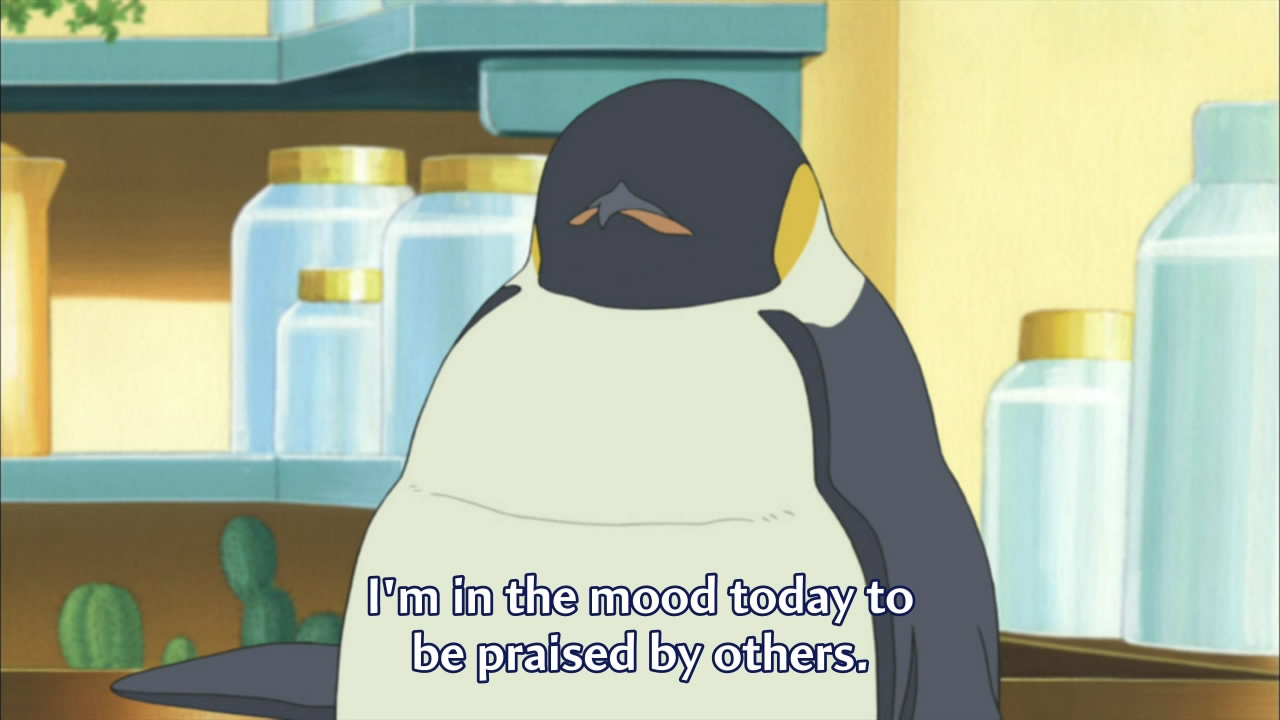
Last week I was involved with the #blogchatca on Twitter, and one of the things that we discussed was how brands understand what you do. Namely, whether or not they "get" your personal brand.

Since my tweet (pictured above) I've been thinking about how my personal brand is perceived online, and how people know that I'm the sort of person that they want to work with beyond just my About Me page.
The answer is simple: natural mentions. The more positive mentions there are of you online, the more readily people will accept these statements to be true. These can come in the form of recommendations, references to you and a specific thing you did or said, or calls to action (eg: "@cindylouwho, your article about XYZ was so insightful. Everyone should read it!")
Natural mentions benefit you and your brand in several ways:

Social Exposure
The more people talking about you, the more relevant you seem. This is marketing 101, but exposure is hyper competitive online and the best way to engage (and control) your exposure is to participate and shape the conversations that you want to be a part of. By giving people specific reasons to mention you in a natural, positive way, you're subtly reinforcing the overall perception of yourself online.
This leads me to my next point:
Opening Doors to New Conversations
By participating in conversations online you're showing your audience and potential customers that you genuinely care about them and their opinions beyond just what you have to offer them. By doing this, you're giving them a reason to respond to you, care about what you have to say, and to endorse you in the future.
For example, most of the conversations that I have online have nothing to do with my personal brand or my work. Most of it is fluffy, lighthearted, and funny. Sure, I participate in online conversations and dedicated Q&A's about content marketing and social media, but by being an actual person online I'm opening myself to be a part of multiple types of conversations, some of which may lead to opportunities to collaborate and many of which paint me (and my work) in a positive light.
Exposure to a Niche Audience
Do you love cat videos? Are you obsessed with shopping for vintage teak furniture? Whatever you're into, make a point to post, share and participate in discussions which showcase the fact that you're a well-rounded, actual person, not just a marketer trying to convert everything that you touch into a contract or sale.
Case in point: this blog. I could talk about stuff like content marketing and social media until the cows come home, but I'm also a real person who spends time with her friends, learns new things, has anxieties, and even writes the occasional poem or two.
By showcasing these sides of my personality I seem far less one-dimensional than what people might otherwise assume when reading my words through a computer screen. People respond well to other people, not to bot-like interactions which are over as soon as you hit the 'Send' button on your reply.
Additionally, by exposing yourself to audiences who might not otherwise have been your "target audience" you open yourself up for tons of creative and collaborative opportunities that may have eluded you otherwise!
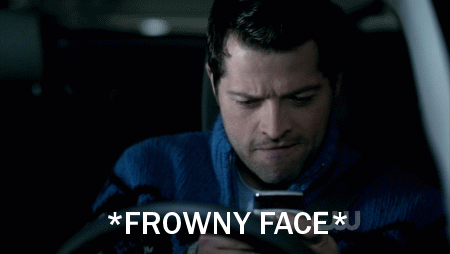
Create a Trusted Reputation
People want to work with me because they see what other people say about me online. Not just my friends (though I always appreciate their kind words) but people who read and share my posts, or clients who have worked with me and felt it to be a mutually beneficial, positive experience.
Whenever a client shares work I've done, or my editor from The Spill Magazine gives me a shout-out on Twitter, these things reinforce that I'm a reliable, hardworking and trustworthy person. They don't have to say it in so many words, but multiple people making general, positive statements increases the odds that someone will see it, and adds to the voices singing your praises online.
In an age heavily reliant on reviews and over-Googling, the more times and places your name comes up in an informal, positive way, the better.
SEO Ranking
This goes without saying: the more people talking about your work and linking to it, the easier it is for people to find you. If nobody's talking about you, nobody will find you and nobody will be able to engage with you because they won't know that you exist.
I'll level with you: getting people to naturally discuss you and your work takes a lot of time, dedication and effort. You have to consider not just why you want people to talk about your work, but why they want to, as well.
Snapchat's 'Discover' Feature & the Evolution of Brand Storytelling
- by Alyson Shane
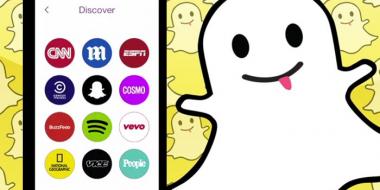
Spoiler alert: I've never really used Snapchat for it's original intended purpose.
In fact, until the they released the Discover feature at the end of January, it was one of my least-frequently used apps. One of those "everyone has it, so I ought to as well" installs.
Which is why, initially, when I heard that they were monetizing via a new in-app feature, I was skeptical to even launch the app and check it out.
I was surprised to find out that it's good. Really, really good.
Not only is it good, but according to a recent article in TechCrunch, it's also really successful. The article refers to data usage as "skyrocketing" after the launch of Discover and states that:
users’ average weekly data consumption grew from around 100 to 150 megabytes per user per week before Discover to now nearly 400 MB per user per week in Europe and over 600 MB per U.S. user per week.
How does it work? Basically Discover is a bunch of curated content from media organizations and brands, delivered as a sort of mini-magazine which, like all Snapchat content, only lasts 24hrs.
This is indicative of a larger trend away from traditional ads and towards sponsored content, but Snapchat is taking things one step further by making the ads themselves the content. With Discover the ads are something that you can seek out and explore, instead of a nasty-looking banner ad at the bottom of your screen, or an annoying pop-up in the middle of your newsfeed.
This is accomplished by Discover being a separate function from the rest of the app. This minimizes disruptions to people who are there to use the app as social sharing tool (ie: not me), which doesn't alienate their initial users, but instead presents a new, engaging way to discover content. The multi-tiered layout offers video, text and photos, and allows the user to dig deeper or to simply swipe to the next topic. It feels more like perusing a digital subscription to a magazine than perusing paid ads, which is refreshing to say the least.
Why does this matter? Brands like Facebook, Instagram and Twitter are already working to use native, in-app advertising and video, so how is Snapchat any different?
What makes Discover and the advertising created for it is what initially set Snapchat apart when it appeared on the scene: the limited nature of it's content. Because each piece of content only lasts 24 hours, brands need to focus on being consistently creative and engaging when creating an episode-based approach to their storytelling.
By being creative with their advertising strategies, Snapchat has begun to usher in a new age of sponsored native content which benefits everyone. It's even managed to convert a relative non-user like me into someone who uses the app specifically to check out it's advertisements.
If that doesn't constitute success, then I don't know what does.
What do you think about Snapchat's Discover feature? Love it or hate it?
